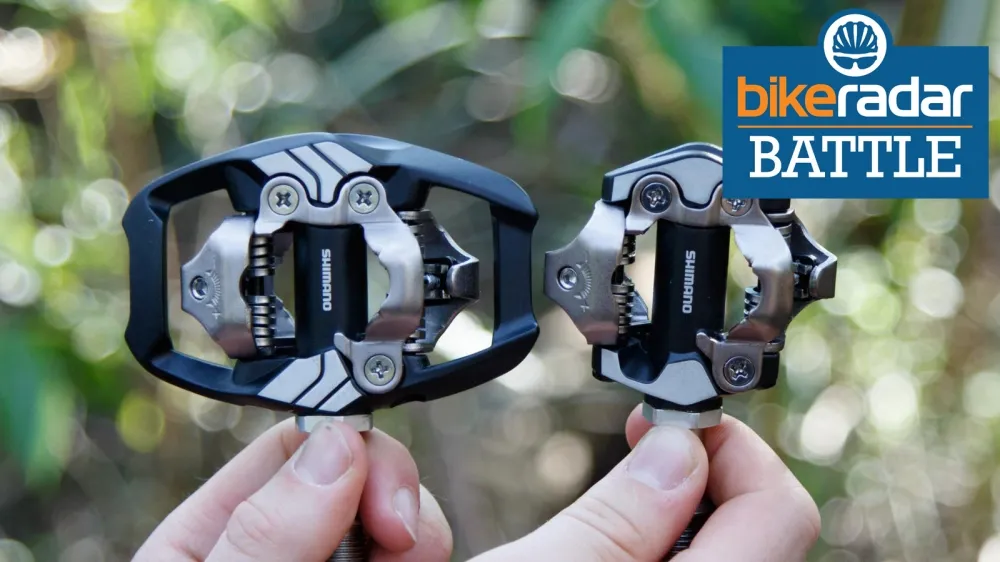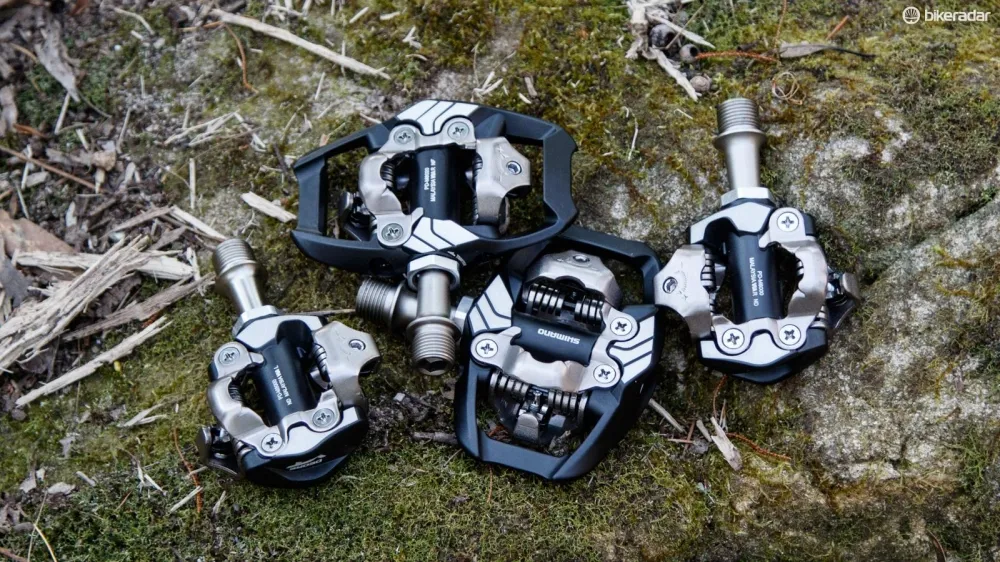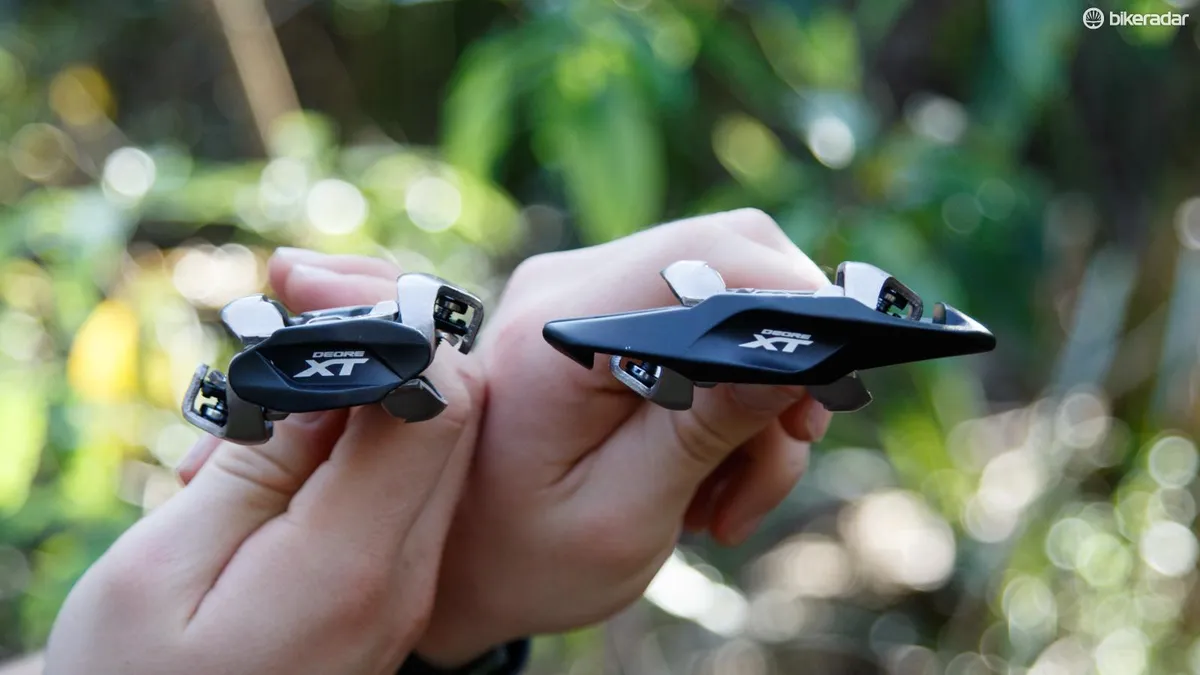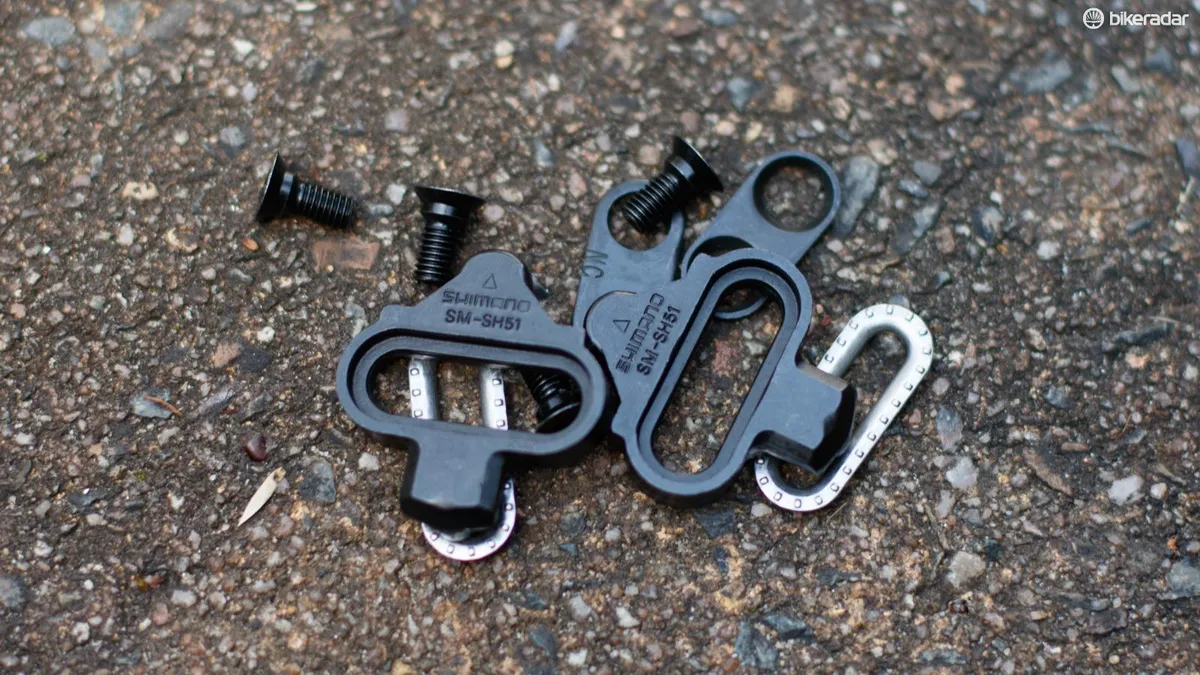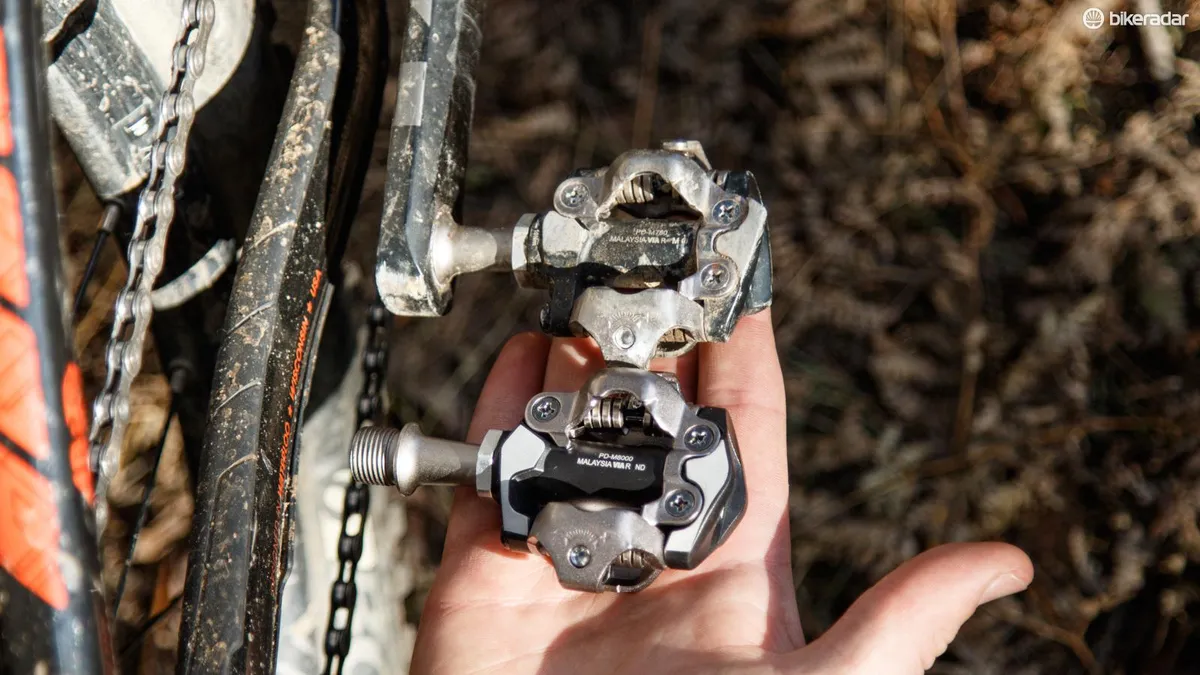For our latest BikeRadar Battle, we have two extremely popular clipless mountain bike pedal models of the same brand up against each other. Clearly Shimano has designed its SPD pedals to meet a wide audience, and there is always going to be some overlap in users of the Race and Trail options.
Such a choice depends on your riding style and preference, but which should you choose? Having spent the past six months swapping between the two (and many years on previous versions), BikeRadar is here to help.
This test should also prove helpful for those looking to buy other grades of Shimano SPD pedals, whether that's deciding between the M520 versus the M530, or XTR’s M9000 Race or M9020 Trail pedals.
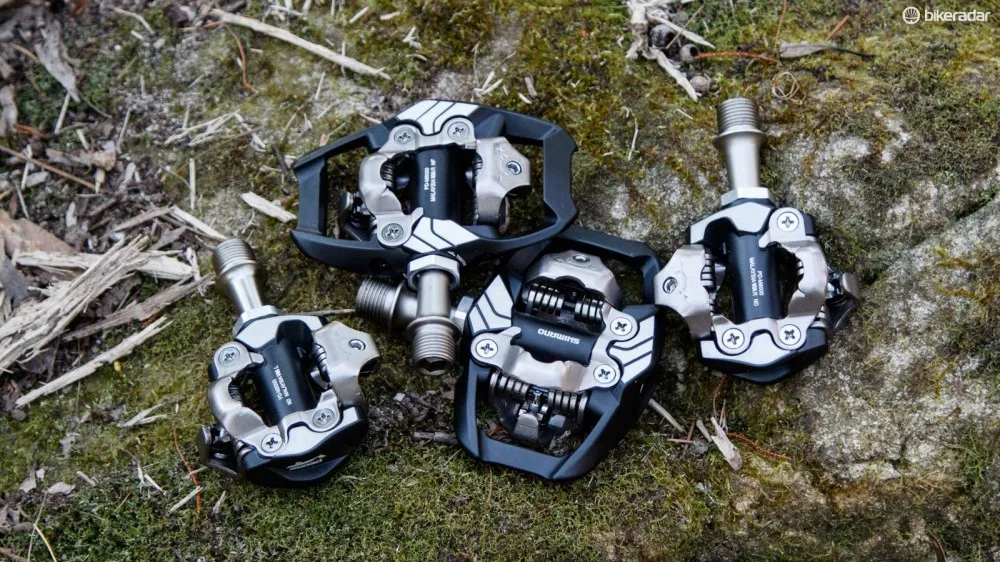
Which is best? Let's begin.
Off the shelf
Released for 2016, the XT M8000 Race and M8020 Trail pedals feature a few updates to the hugely popular XT M780 Race and M785 Trail pedals they replace.
Where the M8000 Race is reminiscent of Shimano’s SPD pedals of the past two decades (or 25 years, if we're being pedantic), the Trail is a more modern concept with an aluminium body surrounding the double-sided clipless SPD mechanism within.
The idea of the Trail’s platform is to provide extra purchase for your shoe when not clipped in, and also prevent rolling of the pedal underneath. However, the benefits also extend to additional protection from rock strikes and hits and an increased pedal-to-shoe contact, which aids in rider stability and power transfer.
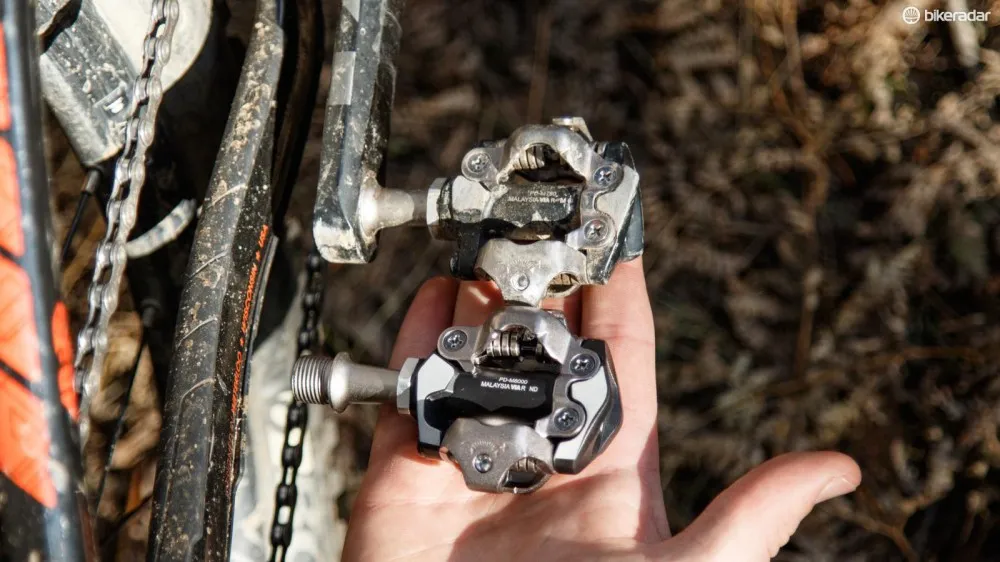
Old vs new. The more recent version offers smoother edges and a wider surface area
The M8000 Race is said to offer a 7.7% increased in pedal-to-shoe contact from a 2.8mm wider pedal platform compared to its predecessor (M780). Additionally, the pedal platform height is 0.5mm lower.
For the M8020 Trail pedal, it’s an 11.7% increase in pedal-to-shoe contact from a 3.3mm wider pedal platform compared to the M785 of past. It too also has a 0.5mm shallower pedal platform body.
Between each other, the M8000 Race measures 59.2mm across the width of the pedal body, with the M8020 Trail at 62mmm. Pedal height varries by a mere 1mm, while axle length is the same at 20.5mm.
Beyond the alloy platform, the most noticeable difference is seen on the scales. Here, our sample M8000 Races weigh 340g (343g claimed) versus the 402g (408 claimed) weight of the M8020 Trails. For the sake of comparison, a pair of XTR M9000 Races will save 33g over the XT version.
Winner: It’s a draw. The increased pedal to shoe contact of the M8020’s is offset by the increased weight. The metal body surrounding the pedal’s mechanism may also prove worth the weight for many.
In your wallet
At $110 / £TBC / AU$169, the M8000 Races are marginally cheaper to the M8020 Trail’s $120 / £TBC / AU$179 pricing. With such a small difference, price shouldn’t a deciding factor between these two pedals.

Cleats are the same old ones, which is good.
Over time, running costs are expected to be extremely similar too, with both featuring the same bearing system, SPD mechanism and steel SPD cleat.
That long-term durability is a key winner for the Shimano XT pedals in general and they’re well proven to be one of, if not the most durable mountain pedal available. Shimano SPD pedals in general are the cheapest option to use long-term.
Within both pedals is the same serviceable internal bearing design, something that can be accessed with nothing more than a household metric open-end spanner. Bearing wear (slop) can easily be adjusted out with two smaller sized spanners too.
One difference in long-term costs is perhaps seen with the Trail’s protection against rock strikes. Here, the metal platform of the Trail pedal may ward off a direct hit that could see the M8000 Race’s retention claws damaged. But we can attest that it takes a seriously large and dangerous impact to cause such damage.
Winner: It’s a draw, again. The Races may be marginally cheaper, but the Trails should prove more resistant to rock strikes and other direct hits over time. In this case, money isn’t a deciding factor.
On the trail
Depending on the trail that lies ahead, each option has its strengths and weaknesses.
The reduced weight of the Race pedals will favour those doing more endurance or climbing based riding. This model wins on the cross-country, or even cyclocross bike. The pedal platform is wide enough to not sacrifice power transfer and clipping in and out is a simple affair.
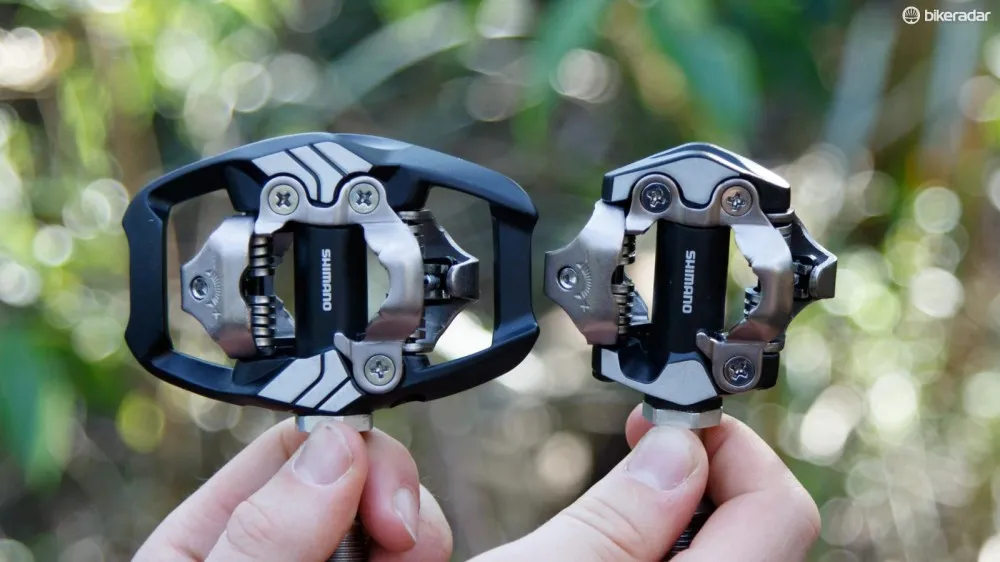
The Race handles thick mud better. That's because its smaller size gives less area for mud to hold onto
Without a surrounding cage, the Race is also marginally better in thick, goopy mud. Where the Trail’s platform can prevent mud from properly clearing away from the shoe sole, the Race is more open to shed the gunk. Still, if thick mud is a regular thing for you, we can’t help but feel both Crankbrothers and Time still offer better options.
With a smaller body, it is possible to miss clipping into the Race pedal all together in a frantic moment. Getting started on a technical climb or getting back into the pedal after a sketchy corner are both common examples of such an occurrence. Here, we’ve had our shoes slip straight past the pedal, never ideal.
This is where the Trail starts to win us over. Miss the pedal and you have a far larger platform to keep you connected until you can clip in correctly.
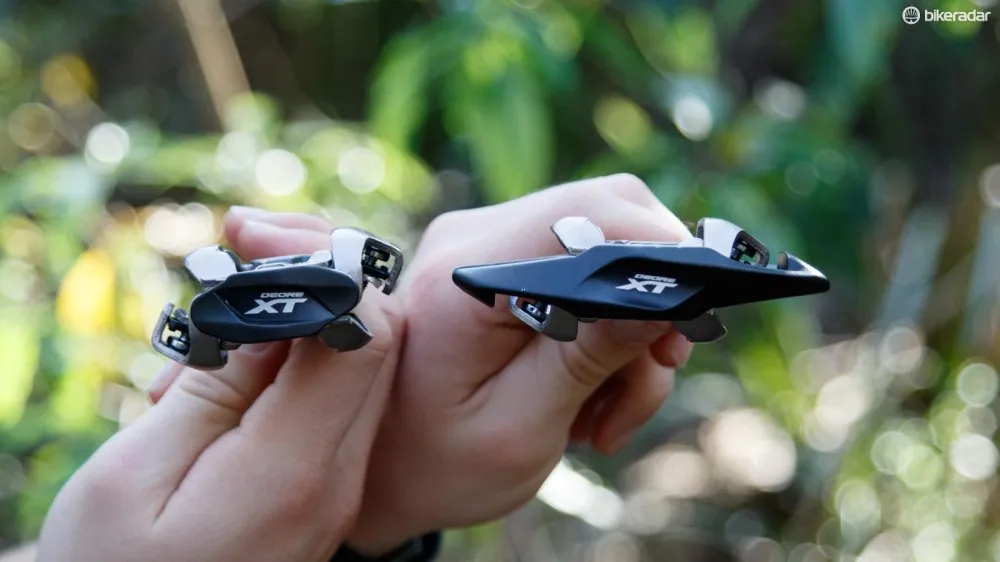
Side on, that platform on the Trail pedals does help to guide your foot
Nervous and newer riders will also be able to rest their mid foot on the Trail pedal without having to clip in. It’s not full of traction, but it’s typically enough to see you through a trail section.
Mating the cleat into the pedal in the first place is easier with the Trails too, with the curved alloy platform providing somewhat of a landing ramp for your shoe.
And while it’s extremely subtle, the increased body width of the Trail pedals does give an ever so slight increased control of the bike. Your shoes will feel slightly more connected, with less reliance on sole stiffness. It’s perhaps most noticeable when cornering hard, with less foot roll experienced compared with the Races.
Winner: Trail. Increased surface area of the Trail's wins through in increased bike control, while the platform aids in getting into the pedal in a hurry. Though just beware of thick mud.
The summary
M8000 Race
M8020 Trail
Winner
Price
$110 / £TBC / AU$169
$120 / £TBC / AU$179
Race
Weight
340
402
Race
Surface width
59.2mm
62mm
Trail
Durability
Class leading
Class leading, same moving components as the Race
Draw
Strength
Superb, no plastics and will take a hit
External cage acts as a protection shield. Pedal is built for heavier duty riding compared with Race
Trail
Ease of use
Easy adjustment and problem free usage
Similar to Race, but the platform aids in guiding your shoe into the SPD mechanism
Trail
Mud shedding
Open design is decent in mud, not class leading though. Crankbrothers and Time pedals lead the way here.
Similar to the Race, but the platform can prevent really thick mud from clearing the shoe.
Race
Ride feel
Lighter and smaller, also means harder to clip into and ride unclipped
Wider platform gives more foot support, easier to ride unclipped. Easier to find pedal in emergency
Trail
Array
Winner – Trail, but don’t discount the Race
Choosing between Shimano’s Race and Trail pedal will always come down to personal preference.
Simply, if you care about weight and want a lighter pedal for cyclocross and cross-country racing, or perhaps just general cross-country to trail riding, then get the Race. It’s the pedal you’ll currently find on our cross-country and cyclocross race bikes (or perhaps the XTR version).
But for the majority of weekender mountain bikers out there, especially if you’re more aggressive in your ride style, hit into things and take your foot out for corners from time to time, then the larger and protective platform of the Trail pedals is best. The Trail is what we’ll put on our bikes with more than 5in / 125mm of suspension travel – which in reality, is what most people are riding these days.
